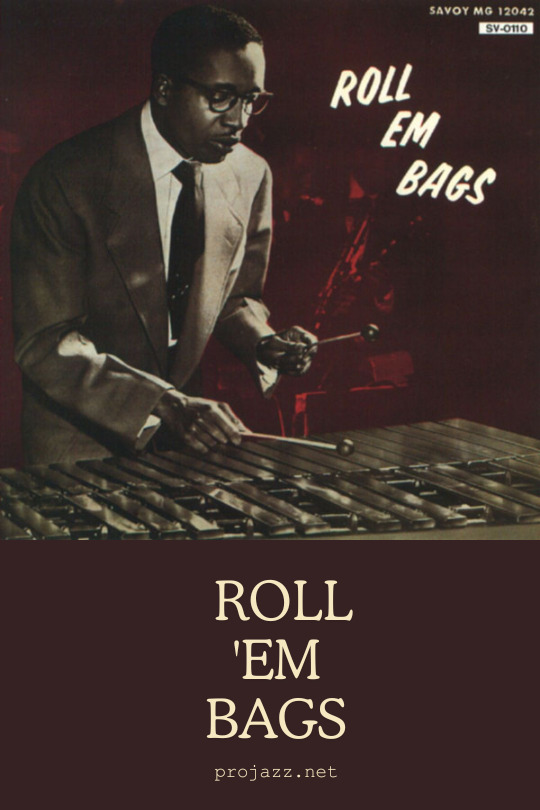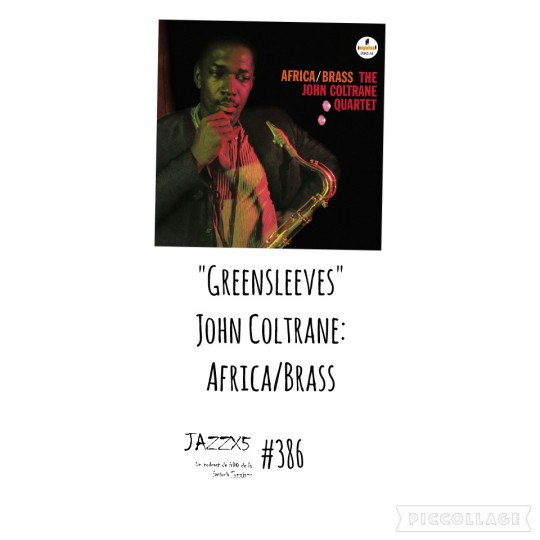#julius watkins
Explore tagged Tumblr posts
Text
"Jazz Lab:" A Quintessential Hard Bop Collaboration
Introduction: The late 1950s were a transformative period in jazz, as musicians explored new forms of expression within the evolving subgenre of hard bop. This era gave rise to some of the most innovative recordings in jazz history, many of which still resonate with listeners today. One such recording is “Jazz Lab”, a remarkable collaboration between alto saxophonist and arranger Gigi Gryce and…
#Art Taylor#Benny Golson#Benny Powell#Classic Albums#Clifford Brown#Dizzy Gillespie#Don Butterfield#Donald Byrd#Gigi Gryce#Harold Arlen#Horace Silver#Jazz History#Jazz Lab#Jazz Lab Quintet#Jimmy Cleveland#Julius Watkins#Randy Weston#Sahib Shihab#Thelonious Monk#Tommy Flanagan#Wade Legge#Wendell Marshall#Yip Harburg
3 notes
·
View notes
Text
Movies/TV Watched 2024
Asteroid City (Wes Anderson, 2023)
Nomadland (Chloé Zhao, 2020)
Cordelia (Adrian Shergold, 2019)
The Piano (Jane Campion, 1993)*
Malcolm X (Spike Lee, 1992)*
Avatar (James Cameron, 2009)
Child’s Play (Tom Holland, 1988)*
Train (Gideon Raff, 2008)
Silent Hill (Christophe Gans, 2006)
Nam June Paik: Moon Is the Oldest TV (PBS American Masters) (Amanda Kim, 2023)
Past Lives (Celine Song, 2023)
Basic Instinct [Director’s Cut] (Paul Verhoeven, 1992)*
In Cold Blood (Richard Brooks, 1967)
What Lies Beneath (Robert Zemeckis, 2000)
Fellini Satyricon (Federico Fellini, 1969)
Significant Other (Dan Berk, Robert Olsen; 2022)
The Mimic (Huh Jung, 2017)
Extinction (Miguel Ángel Vivas, 2015)
The Visit (M. Night Shyamalan, 2015)
The Hole in the Ground (Lee Cronin, 2019)
Batman (Tim Burton, 1989)
Cronos (Guillermo del Toro, 1993)
Under the Skin (Jonathan Glazer, 2013)
Our Flag Means Death [szn 2] (2023)
Wes Craven Presents: They (Robert Harmon, 2002)
Carnival of Souls (Herk Harvey, 1962)
Leviathan (George P. Cosmatos, 1989)
Rick and Morty [szn 5] (2021)
Dark Skies (Scott Stewart, 2013)
Insidious: Chapter 2 (James Wan, 2013)*?
Insidious: Chapter 3 (Leigh Whannell, 2015)
Insidious: The Last Key (Adam Robitel, 2018)
Insidious: The Red Door (Patrick Wilson, 2023)
American Graffiti (George Lucas, 1973)*?
The Pope’s Exorcist (Julius Avery, 2023)
Independence Day (Roland Emmerich, 1996)*
Men in Black (Barry Sonnenfeld, 1997)*
The Exorcist (William Friedkin, 1973)*
Poor Things (Yorgos Lanthimos, 2023)
Angels & Insects (Philip Haas, 1995)*?
Tucker & Dale vs. Evil (Eli Craig, 2010)
The Purge (James DeMonaco, 2013)
4/20 Massacre (Dylan Reynolds, 2018)
The Fast and the Furious (Rob Cohen, 2001)
Poisoned Ground: The Tragedy at Love Canal (PBS American Experience) (Jamila Ephron, 2024)
Beetlejuice (Tim Burton, 1988)*
The Signal (William Eubank, 2014)
Beetlejuice Beetlejuice (Tim Burton, 2024)
The SpongeBob SquarePants Movie (Stephen Hillenburg, Mark Osborne; 2004)
Felix the Cat: The Movie (Tibor Hernádi, 1988)
Speak No Evil (James Watkins, 2024)
Kwaidan (Masaki Kobayashi, 1964)*?
The Portrait of a Lady (Jane Campion, 1996)
Sisters with Transistors (Lisa Rovner, 2020)
Holy Smoke! (Jane Campion, 1999)
Shock Treatment (Jim Sharman, 1981)*
Space: The Longest Goodbye (Ido Mizrahy, 2023)
House of Wax (Jaume Collet-Serra, 2005)
The Lion, the Witch and the Wardrobe (Bill Melendez, 1979)*
Wojnarowicz: F**k You F*ggot F**ker (Chris McKim, 2020)
Longlegs (Osgood Perkins, 2024)
O Brother, Where Art Thou? (Joel Coen, 2000)*
Tess (Roman Polanski, 1979)
Barbarian (Zach Cregger, 2022)
Home Alone (Chris Columbus, 1990)*
Jennifer’s Body (Karyn Kusama, 2009)
Rick and Morty [szn 6] (2022)
The Seeding (Barnaby Clay, 2024)
Edward Scissorhands (Tim Burton, 1990)*
Beatles ’64 (David Tedeschi, 2024)
Fanatical: The Catfishing of Tegan and Sara (Erin Lee Carr, 2024)
Raggedy Ann & Andy: A Musical Adventure (Richard Williams, 1977)*
Rick and Morty [szn 7] (2023)
Five Nights at Freddy’s (Emma Tammi, 2023)
Immaculate (Michael Mohan, 2024)
Freaknik: The Wildest Party Never Told (P. Frank Williams, 2024)
The Booksellers (D. W. Young, 2019)*
His House (Remi Weekes, 2020)
Time Cut (Hannah MacPherson, 2024)
Don’t Move (Adam Schindler, Brian Netto; 2024)
Carry-On (Jaume Collet-Serra, 2024)
Subservience (S. K. Dale, 2024)
The Muppet Christmas Carol (Brian Henson, 1992)*
May December (Todd Haynes, 2023)
Horse Girl (Jeff Baena, 2020)
Psycho (Alfred Hitchcock, 1960)*
Movies/TV watched 2024; asterisks * are rewatches, asterisks w/question marks *? are rewatches I couldn’t remember having seen before but had a vague sense of familiarity and/or I found evidence of watching elsewhere in my archive. Struck titles were unfinished (I absolutely loved the book In Cold Blood but dozed off a bunch during the movie; Under the Skin seemed promising but I had to turn it off because I could NOT emotionally deal with the baby on the beach.)
This year I treated myself to some old weird nostalgia movies on VHS (YouTube or Internet Archive links provided when available). We have a decent collection of thrifted DVDs and we borrow a lot of movies from the library. Occasionally I’ll sign up for a month of a streaming service if there’s something ~exclusive~ we want to watch, and then we’ll end up watching whatever horror garbage is offered. Honestly, I think “meh, it was okay” was my main reaction to a lot of the movies I watched this year? Kind of a bummer.
Favorites in 2024: BEETLEJUICE BEETLEJUICE!!!!! I just loved everything about it :D I thought it was aesthetically the right amount of Tim Burton without being *too much* Tim Burton, ya know? (Love movie environments that feel like a dark ride!) Beetlejuice is a forever favorite, one of my earliest “crushes” (proving that I have absolutely never had good taste in men & that as early as age 4 I yearned for a witty dirtbag prankster to show up and “promptly whisk [me] off from [my] ordinary life into wacky adventures in the land of the dead” [description from the box set of the animated series, yikes lmao; my other fave beginning around this time was Doctor Who lol, obvious underlying theme is obvious]). ANYway, BJ BJ was also the first movie we saw in theatres post-covid! Not necessarily due to covid-related concerns, but just like, idk, being busy and frugal homebodies. And I guess since more theatres are offering restaurant food nowadays, they’re making it more difficult to sneak food in (no bags allowed), booooo.
Other faves: Asteroid City (I’m not usually a Wes Anderson person but this was visually stunning), His House, Poor Things. The Seeding was pretty wild, if heavy-handed. Tho I kind of thought *everything* about male/female relationships in horror movies I saw this year was getting pretty heavy-handed :/ Sisters with Transistors was a cool documentary about women (Delia Derbyshire, Daphne Oram, Wendy Carlos, Pauline Oliveros, et al.) in the early days of electronic music, dreamily narrated by Laurie Anderson (*heart-eyes*). Beatles ’64 was surprisingly okay! I *really* appreciated the interviews with people who were young Beatlemaniacs back in the ‘60s, hearing (mostly) women talk about how the Beatles represented a new way of being masculine, how liking the Beatles could provide a sense of agency for women navigating their own desires, etc. That was a cool perspective which I do not personally encounter very often in the Beatles cinematic universe. (For background: My two most recent long-term relationships have been with indie musicians who just happen to be extremely obsessed with the Beatles, so I’ve spent the past 17+ years absorbing deep dives about how great they are, and while I like many of their songs and Understand Their Position of Importance in the History of Pop/Rock/Human Culture, I just do not give a fuuuck on a personal level. But I do still begrudgingly respect my partner’s interest enough to occasionally watch a Beatles documentary with him.)
5 notes
·
View notes
Text

Milt Jackson – Roll ‘Em Bags
Roll ‘Em Bags is an album by American jazz vibraphonist Milt Jackson featuring performances recorded in 1949 and 1956 and released on the Savoy label. Milt Jackson – vibes, piano Kenny Dorham – trumpet Julius Watkins – French horn Billy Mitchell , Lucky Thompson – tenor saxophone Wade Legge – piano Wendell Marshall, Curly Russell – bass Kenny Clarke – drums Joe Harris – timbales
11 notes
·
View notes
Text

(62 YEARS AGO)
September 1, 1961 - John Coltrane: Africa/Brass is released.
# ALL THINGS MUSIC PLUS+ 4/5
# Allmusic 4.5/5
# Down Beat 2/5
Africa/Brass is the eighth studio album by John Coltrane, released on September 1, 1961.
Recorded:
May 23, 1961 and June 7, 1961, at RVG's Englewood Cliffs studio
Personnel:
John Coltrane – soprano and tenor saxophone
Booker Little – trumpet
Julius Watkins, Bob Northern, Donald Corrado, Robert Swisshelm – french horn
Bill Barber – tuba
Pat Patrick – baritone saxophone
McCoy Tyner – piano
Reggie Workman – bass
Elvin Jones – drums
__________
ORIGINAL LINER NOTES
John Coltrane is a quiet, powerfully-built young man who plays tenor saxophone quite unlike anyone in all of jazz. His style has been described as "sheets of sound" or as "flurries of melody." But, despite the accuracy, or lack of accuracy, of such descriptions, it is a fact that Coltrane's style is wholly original and of growing influence among new tenor players.
Perhaps he himself best described his dazzling style in a recent Down Beat article with writer Don DeMichael. "I started experimenting because I was trying for more individual development. I even tried the long, rapid lines that Ira Gitler termed 'sheets of sound' at the time. But actually, I was beginning to apply the three-to-one chord approach and at this time the tendency was to play the entire scale of each chord. Therefore, they were usually played fast and sometimes sounded like glisses."
Although Coltrane has absorbed this experiment into his present style and moved on, its effect was shocking, and intriguing, in the jazz world.
Most recently, as this album will attest, Coltrane has become absorbed by the rhythms of Africa. During the editing sessions for this album he noted, "There has been an influence of African rhythms in American jazz. It seems there are some things jazz can borrow harmonically, but I've been knocking myself out seeking something rhythmic. But nothing swings like 4/4. These implied rhythms give variety."
For this record, Coltrane composed two of the three selections, then discussed the orchestration thoroughly with Eric Dolphy, a reed player of enormous talent. Pianist McCoy Tyner of Coltrane's group was the third member of the discussion group.
"Actually," Dolphy recalled, "All I did was orchestrate. Basically John and McCoy worked out the whole thing. And it all came from John; he knew exactly what he wanted. And that was, essentially, the feeling of his group."
AFRICA has an unusual form. Its melody had to be stated in the background because Coltrane is not tied down by chords. "I had a sound that I wanted to hear," Coltrane remarked of this composition. "And what resulted was about it. I wanted the band to have a drone. We used two basses. The main line carries all the way through the tune. One bass plays almost all the way through. The other has rhythmic lines around it. Reggie and Art have worked together, and they know how to give and take." This work began with Coltrane's quartet. He listened to many African records for rhythmic inspiration. One had a bass line like a chant, and the group used it, working it into different tunes. In Los Angeles, John hit on using African rhythms instead of 4/4, and the work began to take shape. Tyner began to work chords into the structure, and, in John's own words, "it's been growing ever since."
The instrumentation--trumpet, four French horns, alto sax, baritone sax, two euphoniums, two basses, piano, drums, and tuba--is among the most unusual in jazz. But, Dolphy explained, "John thought of this sound. He wanted brass, he wanted baritone horns, he wanted that mellow sound and power."
Coltrane heard the playbacks and nodded. "It's the first time I've done any tune with that kind of rhythmic background. I've done things in 3/4 and 4/4. On the whole, I'm quite pleased with Africa."
GREEN SLEEVES is an updating of the old, revered folk song. It's included in this set because Coltrane, in recent months, has been studying folk music. "It's one of the most beautiful folk melodies I've heard," he said. "It's written in 6/8, and we do it just about as written. There's a section for improvisation with a vamp to blow on."
The quartet has been playing this theme recently, and the arrangement is based on Tyner's chords. Dolphy notated it. "For me," Coltrane said, "Greensleeves is the most enjoyable to play. Most of the time we get a nice pulse and groove. It was a challenge to add the band to it. I wanted to keep the feeling of the quartet. That's why we took the same voicings and the same rhythm McCoy comps in."
BLUES MINOR is a piece the quartet has been playing of late. It was assembled at the recording session. "It's a head," Dolphy said. "McCoy gave me the notes. I wrote out the parts, and the band did it on one take." It swings loosely with the ease and drive of a head arrangement.
All in all, this album is representative of the state of musical mind of John Coltrane, 34, on his way to something new and exciting, but pausing along the way to sum up the fresh and provocative work he has accomplished this far.
~ Dom Cerulli
TRACKS
Side one
1. Africa (Coltrane) – 16:28
Side two
1. Greensleeves (traditional, arranged by McCoy Tyner) – 10:00
2. Blues Minor (Coltrane) – 7:22
2 notes
·
View notes
Audio
Blues Minor by John Coltrane from the album Africa/Brass
#music#jazz#john coltrane#booker little#julius watkins#robert swisshelm#donald corrado#bob northern#pat patrick#britt woodman#reggie workman#bill barber#mccoy tyner#carl bowman#creed taylor#elvin jones#eric dolphy#rudy van gelder
20 notes
·
View notes
Video
youtube
Gerald Clayton on Monk
Friday the 13th
Thelonious Monk
Sonny Rollins – sax Julius Watkins – french horn Thelonious Monk – piano Percy Heath – bass Willie Jones – drums
#Friday the 13th#Gerald Clayton#Sonny Rollins#Julius Watkins#Percy Heath#Willie Jones#Thelonious Monk
9 notes
·
View notes
Text
JazzX5#386. John Coltrane: "Greensleeves" [Africa/Brass (Impulse!, 1961)] [Minipodcast de jazz aka Malditos Jazztardos] Por Pachi Tapiz
JazzX5#386. John Coltrane: “Greensleeves” [Africa/Brass (Impulse!, 1961)] [Minipodcast de jazz aka Malditos Jazztardos] Por Pachi Tapiz
“Greensleeves” John Coltrane: Africa/Brass (Impulse!, 1961) John Coltrane, Booker Little, Julius Watkins, Bob Northern, Donald Corrado, Robert Swisshelm, Bill Barber, Pat Patrick, McCoy Tyner, Reggie Workman, Elvin Jones, Freddie Hubbard, Julian Priester, Charles Greenlee, Jim Buffington, Garvin Bushell. La orquestación fue obra de McCoy Tyner y Eric Dolphy. Tomajazz: © Pachi Tapiz, 2022 ¿Sabías…

View On WordPress
#Bill Barber#Bob Northern#Booker Little#Charles Greenlee#Donald Corrado#elvin jones#Eric Dolphy#Freddie Hubbard#Garvin Bushell#Impulse!#Jim Buffington#john coltrane#Julian Priester#Julius Watkins#mccoy tyner#Pat Patrick#Reggie Workman#Robert Swisshelm
0 notes
Photo

Quincy Jones: Big Band Bossa Nova
WaxTime 771836, 2013
Originally released: 1962
#meine photos#vinylcollection#1962 music#quincy jones#vinylcommunity#phil woods#paul gonsalves#roland kirk#jerome richardson#clark terry#julius watkins#alan raph#lalo schifrin#jim hall#chris white#rudy collins#jack del rio#carlos gomez#jose paula
1 note
·
View note
Photo


I feel like a lot of people just have a problem with this show,” Andrew Rannells says, who stars as Larry, a bratty and rebellious man who’s a constant headache for his boyfriend, Hank. However, he thinks that might have more to do with the viewer than the work. “I think it can be looked at as a rather bleak depiction of what your life as a homosexual would be like. I think it got a bad reputation for a while. But I hope that this revival is at least in some way showing that it's actually funnier than people give it credit for, there’s more love between those characters than people remember.” We also have the benefit of new context, 50 years later. “It's not a representation of every gay person. It's a representation of nine people on this one night. At the time, it was a symbol for all gay people. It doesn't have to be.”
Andrew Rannells for GQ.
#andrew rannells#the boys in the band#boys in the band#wallpaper#jim parsons#matt bomer#zachary quinto#charlie carver#robin de jesus#michael benjamin washington#tuc watkins#brian hutchison#gq#photoshoot#gay#pride#julius#gay bar#gqmagazine#phone wallpaper#magazine
38 notes
·
View notes
Photo

NILØS EMPTYSET / CAMPAIGN
3 notes
·
View notes
Text

Les Spann – Gemini
Gemini is an album by American jazz guitarist and flutist Les Spann released in 1961. It is Spann’s only studio album as a leader, recorded when he was playing as a sideman with Dizzy Gillespie’s quintet and Quincy Jones’ big band. The title of the album corresponds to Spann’s zodiac sign, born on May 23, 1932. For this work Spann led a quintet formed by Julius Watkins (French horn), Tommy Flanagan (piano), Sam Jones (double bass) and two drummers sharing the two recording dates, Albert “Tootie” Heath and Louis Hayes.
3 notes
·
View notes
Text
Black Folklore Resource.
I’ve been thinking and researching a lot about the (Black) Southern Gothic style/aesthetic and African American folklore, so I put together a list of books for myself and thought it might be helpful to someone else.
-;-;-
FOLKTALE COLLECTIONS
The People Could Fly: American Black Folktales by Virginia Hamilton | Thrift Books Amazon
Her Stories: African American Folktales, Fairy Tales, and True Tales by Virginia Hamilton | Amazon
Mules and Men by Zora Neale Hurston | Amazon Thrift Books
Every Tongue Got to Confess : Negro Folk-Tales from the Gulf States by Zora Neale Hurston | Thrift Books Amazon
Go Gator and Muddy the Water : Writings by Zora Neale Hurston from the Federal Writers Project by Zora Neale Hurston | Thrift Books Amazon
Lies and Other Tall Tales by Zora Neale Hurston and Joyce Carol Thomas | Thrift Books Amazon
FOLKLORE AND STORYTELLING
Black Culture and Black Consciousness: Afro-American Folk Thought from Slavery to Freedom by Lawrence W. Levine | Thrift Books
Shuckin’ and Jivin’: Folklore from Contemporary Black Americans | Thrift Books Amazon
A Treasury of Afro-American Folklore: The Oral Literature, Traditions, Recollections, Legends, Tales, Songs, Religious Beliefs, Customs, Sayings and Humor of Peoples of African American Descent in the Americas by Harold Courlander | Amazon
The Grey Album: On the Blackness of Blackness by Kevin Young | Amazon
Talk That Talk: An Anthology on African-American Storytelling by Linda Goss | Amazon
African American Folktales: Stories from Black Traditions in the New World by Roger Abrahams | Amazon
Deep Down in the Jungle: Black American Folklore from the Streets of Philadelphia by Roger Abrahams | Amazon
Singing the Master : The Emergence of African-American Culture in the Plantation South by Roger D. Abrahams | Thrift Books Amazon
From Trickster to Badman: The Black Folk Hero in Slavery and Freedom by John W. Roberts | Amazon
Black Folklore and the Politics of Racial Representation by Shirley Moody-Turner | Amazon
Black Folktales by Julius Lester | Amazon
Folk beliefs of the southern Negro (1926) by Newbell Niles Pucket | Amazon
Black Folklore and the Politics of Racial Representation by Shirley Moody-Turner | Amazon
HUMOR
African American Humor: The Best Black Comedy from Slavery to Today (The Library of Black America series) by Mel Watkins, Dick Gregory | Amazon
Honey, Hush!: An Anthology of African American Women's Humor by Daryl Cumber Dance, Nikki Giovanni | Amazon
STYLE
The Birth of Cool: Style Narratives of the African Diaspora by Carol Tulloch | Amazon
Black Cool: One Thousand Streams of Blackness by Rebecca Walker, Henry Louis Gates Jr. | Amazon
MAGIC/MYSTICISM
African American Female Mysticism: Nineteenth-Century Religious Activism by Joy R. Bostic | Amazon
Working Conjure: A Guide to Hoodoo Folk Magic by Hoodoo Sen Moise | Amazon
Black Magic: Religion and the African American Conjuring Tradition by Ifalaye Books | Amazon
FOLK HEALING
Working the Roots: Over 400 Years of Traditional African American Healing by Michele Elizabeth Lee | Amazon
African American Slave Medicine: Herbal and nonHerbal Treatments by Herbert C. Cove | Amazon
African American Folk Healing by Stephanie Mitchem | Amazon
ADDITIONS: 7/27/2019 (NOTE: As I continue to add books, some of these may deviate from folklore and focus on Black history and/or Black experiences)
Fiction and Folklore: The Novels of Toni Morrison by Trudier Harris | Thriftbooks Amazon
The Skull Talks Back: And Other Haunting Tales by Joyce Carol Thomas & Zora Neale Hurston | Thriftbooks Amazon
Passed On: African-American Mourning Stories by Karla FC Holloway | Thriftbooks Amazon
Black Bodies and the Black Church: A Blues Slant by Kelly Brown Douglas | Amazon
This is absolutely not a definitive list and if you have more information or recommendations please feel free to add it!
#american folklore#african american folklore#folklore#black folklore#african american folktales#black folktales#folktales#african american humor
9K notes
·
View notes
Text

My painting process: switching from different you tube channels (like: @alpha_male_s , @rational_male, @rsdtyler, @klausthiele.io, @peterfrahmcoaching , @entrepreneurs_in_cars, @david_deangelo, @realrossjeffries, @mattcrossofficial, @coachgregadamstv, @madisonhimself, @fitxfearless , @red.pilled.rican , @toddvdating , @eckharttolle, @coachcoreywayne, @thefuturishere, @better_bachelor, @stephiscold, @kevinsamuels_ , @human_oninsta , @book_of_alpharonomy, @johnanthonylifestyle , @bodoschaefer, @RyanStone, @julienhimself @bosana.s, listening to while painting.
Sometimes just live for escaping with in to painting while listening to a certain audiobook series. ( examples: Jack Reacher (lee child/ Andrew child @leechildreacher ), Sharpe ( Bernard Cornwell) ), Jack Ryan ( Tom Clancy ),Julius Eichendorf/ In Vino Veritas (Sebastian Henn @carsten.henn / We both became honored with the same cultural Award (Kulturpreis)), Decius Caecilius Metellus / SPQR ( John Maddox Roberts ), Pekkala/ The Smaragd Eye ( Sam Eastland/ Paul Watkins ), @jamesleeburke, the oeuvre of @robertgreeneofficial , J.l. Bourne Zombie Apocalypse Diaries Series, Don Winslow’s audiobooks , Roberto Saviano’s „ Zero Zero Zero „, Harry Flashman ( Georg MacDonald Fraser ), Michael Crichton, Sven Hassel’s ww2 comical fiction, @heinzstrunk, John Grisham, Maxwell Maltz, Jonathan Littell, @daviddeida.live , @benjamin_von_stuckrad_barre , @verafbirkenbihl , @thebriantracy , @napoleonhillofflcial , etc.
I most of the time listen to audio while painting. Being it fiction/ being it useful/ selfdevelopment/ broading skill set content. I started listening to selfhelp/ pua stuff ( pre the game book/ via@bit torrent) around 2000. Since my childhood I like listening while painting ( Playing )
#SEAK #ClausWinkler #workprocess #Kunst #paintings #stylewriting #fatcap #throwies #newcontemporary #artcollect #Stylewriting #postcontemporary #artinvest #artiststudiolife #artprocess #Contemporarypaintings #paintingnow #germanart #arte #collectart #cwinkler #artmarket #Modernartists #abstractart #contemporaryartgallery #abstractpainters #kunstaustellung #artinvestments #Kunst #SEAKClausWinkler
#seak#clauswinkler#kunst#seakclauswinkler#künstler#artist#contemporaryart#art#cwinkler#clausseakwinkler
2 notes
·
View notes
Video
youtube
Soul Bossa Nova ♫ Quincy Jones And His Orchestra ♫
Released on: 1962-01-01 Producer, Conductor, Associated Performer, Recording Arranger: Quincy Jones
Associated Performer, Alto Saxophone: Phil Woods Associated Performer, Tenor Saxophone: Paul Gonsalves Associated Performer, Flute, Alto Flute: Roland Kirk Associated Performer, Flute, Alto Flute, Woodwinds: Jerome Richardson Associated Performer, Trumpet, Flugelhorn: Clark Terry Associated Performer, French Horn: Julius Watkins Associated Performer, Bass Trombone: Alan Raph Associated Performer, Piano: Lalo Schifrin Associated Performer, Guitar: Jim Hall Associated Performer, Bass Guitar: Chris White Associated Performer, Drums: Rudy Collins Associated Performer, Percussion: Jack Del Rio Associated Performer, Percussion: Carlos Gomez Associated Performer, Percussion: Jose Paula Composer Lyricist: Quincy Jones
1 note
·
View note